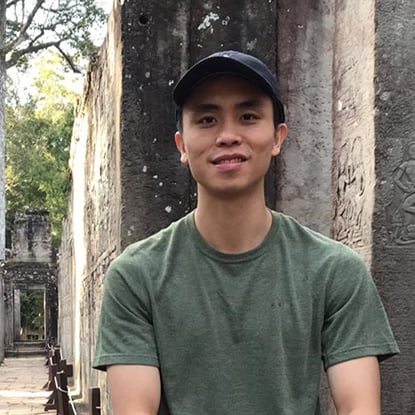If you're seriously considering retiring overseas, here's what you need to know about the visa requirements for Australia, New Zealand, Malaysia, Thailand, and Vietnam.
With rising cost of living and more elderly residents working in their old age to sustain themselves, retiring in Singapore is becoming an arduous task. Not surprisingly, some Singaporeans dream of retiring overseas, often in a place they deem to be more affordable to stretch their money and live a more comfortable life.
Whether you want a different experience in a foreign country, or if you want to retire in a place that has a lower cost of living, here’s what you need to know about the various retirement visa abroad and retiring overseas costs.

⚡Flash Deal⚡: Get an extra S$200 cash on top of an Apple iPhone 15 Pro Max 256GB (worth S$2,017.50) or an Apple Products Bundle [Apple iPad Air (5th Generation) 10.9" WiFi 256 GB + Apple Magic Keyboard + Apple Pencil (2nd generation)] (worth S$1,779.50) or S$1,500 cash when you successfully apply for a Citigold account and make a S$250,000 deposit within 3 months of account opening and maintain these funds until gift fulfilment. Valid till 2 May 2024. T&Cs apply.
Applicable to new-to-bank only (i.e. users with no Citigold or Current and Savings Accounts). If a user has applied for Citi Credit Card or Personal Loan, they will still be eligible.
Plus, score over S$2,460 bonus cash when you maintain your Citigold relationship and fulfil the following qualifying criteria (T&Cs apply):
- Complete an Investment Risk Profile and Fact Find Report and get S$100 cash
- Hold a valid primary/main Citi Credit Card and get a S$300 bonus cash reward.
- Take up a Citi Home Loan with min. loan size of S$800,000 within 3 months of account opening and get a S$500 bonus cash reward.
- Purchase S$100,000 worth of investments and/or insurance from Citibank to enjoy a S$600 bonus cash reward.
- Maintain a Citigold relationship for 12 months from date of approval and get a S$960 cash reward.
Looking for the best credit cards to complement your spending patterns and expenditure in 2024? Check out our Ultimate Credit Card Guide that covers all things credit cards in Singapore – from choosing between a cashback, miles, or rewards credit card to planning your credit card strategy.
But first, what happens to your CPF savings if you leave Singapore?
Since our CPF savings make up a large bulk of our retirement funds, one of the biggest concerns before we move overseas is what will happen to them.
According to the CPF, you can withdraw all your CPF savings if you’re leaving Singapore and West Malaysia, and renouncing your Singapore Citizenship or Permanent Residency (PR) for good. You must also be 55 years or older.
Malaysians who want to leave Singapore but live in West Malaysia may also withdraw all their CPF savings.
Your CPF savings (Ordinary Account, Special Account, and MediSave) will be transferred to your bank account, less any unpaid MediSave premiums and unpaid taxes. You can apply to withdraw your CPF savings here.
If you’re under CPF LIFE, your policy will be terminated and any unused premiums will be refunded. You can choose to retain your CPF LIFE policy and continue to receive monthly payouts, but must have either a Singapore personal or joint bank account.
Finally, if you made any investments under the CPF Investment Scheme (CPFIS), your investments will be transferred to your Central Depository Account (CDP) first before you can liquidate them.
Working out the visa requirements
Another important factor to consider before deciding which country to emigrate to is the visa requirements.
If your goal is to leave Singapore indefinitely and retire in another country, then your best bet is to obtain a long-term visa, including becoming a permanent resident or citizen of that country.
Obtaining citizenship or even permanent residency status would allow you to enjoy all/most of the associated benefits as a resident of that country, including subsidies for homes and healthcare, as well as the right to remain in that country indefinitely.
Each country has its own rules and regulations for foreigners moving into the country. For instance, Australia offers citizenship by descent; you could be eligible for Australian citizenship if at least one of your parents is an Australian citizen and if you were born overseas.
But if you don’t, you may stand a higher chance if you had previously lived in that country prior to applying for citizenship/PR, or if you have family members who are citizens or PRs in the country.
However, if citizenship or permanent residency isn’t an option (yet), then there are also visas that allow temporary residency. But if you're on a short-term visa, one of the downsides is that you can’t remain in that country for a long period of time and would need to reapply for a visa to extend your stay.
So without further ado, let's take a look at how much a retirement visa costs in these countries.
Visa for retiring in Australia
According to a 2016 census, there are over 54,000 Singaporeans living in Australia. And it’s not hard to see why.
Australia is known to have an easy-going and laid-back culture. It’s home to some fantastic beaches and natural destinations.
What’s more, it’s also a diverse and multicultural country with a large community of Asian people.
Previously, the best way to obtain a PR was to apply through the Investor Retirement Visa (Subclass 405) and the Retirement Visa (Subclass 410). However, both are currently closed to new applicants.
There are a few visa pathways if you want to live permanently in Australia. The three most common ways are:
|
Visa type |
Who’s it for |
|
Family-steam permanent visa |
If you have partners, children, parents, or grandparents who are Australian citizens, or PRs of Australia or eligible New Zealand citizens |
|
Work-stream permanent visa |
If you’re a worker of an Australian employer |
|
Business or investor-stream permanent visa |
If you plan on starting a business or investing in Australia |
However, there are also other visa options if you want to become a PR in Australia, such as the Former Resident Visa, Global Talent Visa, and Retirement Visa.
Since we’re on the topic of retirement, let’s explore the Retirement Visa option.
Previously, the best way to obtain a retirement visa in Australia was to apply through the Investor Retirement Visa (Subclass 405) and the Retirement Visa (Subclass 410). However, both are currently closed to new applicants.
Likewise, the Parent Visa (Subclass 103) and Contributory Parent Visa (subclass 143) aren’t available for application at the moment.
But hope is not lost. If you plan on starting a business or investing in Australia, you can consider applying for the Investor Visa (Subclass 891).
With this visa, you can stay in Australia permanently, apply for Australian citizenship, and continue with your business and investment activities in Australia.
The three main requirements for this visa are that you must be a holder of the Investor (Provisional) visa (Subclass 162), have A$1.5 million (S$1.4 million) for four years, and have lived in Australia for two of the last four years. The cost of this visa starts from A$2,570 (S$2,391).

⚡Flash Deal⚡: Get an extra S$200 cash on top of an Apple iPhone 15 Pro Max 256GB (worth S$2,017.50) or an Apple Products Bundle [Apple iPad Air (5th Generation) 10.9" WiFi 256 GB + Apple Magic Keyboard + Apple Pencil (2nd generation)] (worth S$1,779.50) or S$1,500 cash when you successfully apply for a Citigold account and make a S$250,000 deposit within 3 months of account opening and maintain these funds until gift fulfilment. Valid till 2 May 2024. T&Cs apply.
Applicable to new-to-bank only (i.e. users with no Citigold or Current and Savings Accounts). If a user has applied for Citi Credit Card or Personal Loan, they will still be eligible.
Plus, score over S$2,460 bonus cash when you maintain your Citigold relationship and fulfil the following qualifying criteria (T&Cs apply):
- Complete an Investment Risk Profile and Fact Find Report and get S$100 cash
- Hold a valid primary/main Citi Credit Card and get a S$300 bonus cash reward.
- Take up a Citi Home Loan with min. loan size of S$800,000 within 3 months of account opening and get a S$500 bonus cash reward.
- Purchase S$100,000 worth of investments and/or insurance from Citibank to enjoy a S$600 bonus cash reward.
- Maintain a Citigold relationship for 12 months from date of approval and get a S$960 cash reward.
Visa for retiring in New Zealand
New Zealand is the more laid-back version of Australia. If you’ve ever visited the country or have watched The Lord of the Rings films, then you know that New Zealand is known for its breathtaking natural scenery.
It’s also a country with a low population density, heck, even its most popular cities and towns are considered quiet compared to Australia.
Similar to Australia, New Zealand has four seasons, so the weather isn’t as hot and humid as Singapore’s. There’s also a huge Asian population — over 16% of the population is of Asian ethnicity, and while not as significant as the sheep population, that’s still a large number.
Two retirement visa programs allow you to retire and live in New Zealand permanently: The Parent Retirement Resident Visa and The Temporary Retirement Visitor Visa.
|
Visa type |
Length of stay |
Who’s it for |
Investment needed |
|
Parent Retirement Resident Visa |
Indefinitely |
If you have a child who’s a New Zealand citizen or resident |
NZ$1,000,000 (S$930,460) invested in New Zealand for 4 years |
|
Temporary Retirement Visitor Visa |
Up to 2 years |
If you’re 66 years or older and have an annual income of at least NZ$60,000 |
You need to invest at least NZ$750,000 (S$697,845). Additionally, you must have NZ$500,000 (S$465,230) in settlement funds |
As you can see, retiring in New Zealand isn’t cheap. However, the saving grace of applying for the Temporary Retirement Visitor Visa is you don’t have to move your funds to New Zealand; the settlement funds can remain where they are.
For instance, if you have a house in Singapore, you can nominate it as settlement funds and don’t have to sell it.
Beyond the two visas mentioned above, there are also other visa programs that help you live permanent in New Zealand. For example, if you’re 55 years old or below, you can apply for the Straight to Residence Visa, or Investor 1 and 2 Resident Visa, the latter requires you to have a lot of investments in New Zealand.
Visa for retiring in Malaysia
You don’t need to venture to a faraway country to retire; you can cross the border and retire in Malaysia.
Malaysia is comparable to Singapore in terms of culture, language, and food. But the country also offers breathtaking scenery, beautiful beaches, and a low cost of living. In fact, based on a survey by International Living, Malaysia was voted as the third-best country to retire in.
The My Second Home (MM2H) programme is the best way to retire in Malaysia. The MM2H is a government initiative that allows you to stay in the country for 10 years via a long-term social visit pass. You can also bring your spouse and unmarried children under the age of 21 as dependents.
Oh, and you’re also allowed to own freehold landed properties and won’t need to pay inheritance tax or withholding tax when you dispose of the property after 5 or more years.
If you’re 50 years and below, you must:
- Have RM500,000 (S$153,954) worth of liquid assets
- An offshore income of RM10,000 (S$3,079) per month
If your visa is approved, you must also open a fixed deposit account of RM300,000 (S$92,373). You can withdraw up to RM150,000 (S$92,372) after the first year, but must maintain a minimum balance of RM150,000 throughout your stay in Malaysia.
If you’re 50 years old and above:
- Have RM350,000 (S$107,768) worth of liquid assets
- An offshore income of at least RM10,000 per month
Aside from that, you must also open a fixed deposit account of at least RM300,000 upon your arrival. You may withdraw up to RM150,000 in your second year but must maintain RM150,000 from your second year onwards and throughout your stay in Malaysia.
Visa for retiring in Indonesia
Indonesia is another popular country for Singaporeans to retire. The Indonesian archipelago is made up of several thousands of beautiful islands, with the most notable one being Bali.
Indonesia is also a country of diverse culture, beautiful landscapes, and low living expenses.
The only visa that’s available for Singaporeans to retire in Indonesia is the Temporary Stay Visa for Retirees, or KITAS. This visa is specifically for those who are 55 years and wish to retire in Indonesia.
With this visa, you’ll get to enjoy several perks such:
- Obtaining a local driver’s license
- Buying and registering a car under your name
- Opening an Indonesian bank account
- Receiving a Multiple Exit Re-Permit (MERP), which allows you to leave and enter the country as many times as you want
However, there are several drawbacks to this visa. Firstly, it’s only valid for a year and can be renewed up to five times.
Secondly, you’re also not allowed to work in the country. This means that you would need to sustain yourself financially in Indonesia through other means, such as your pension income.
Your retirement income must be at least US$1,500 (S$2,145) a month, or US$18,000 (S$25,743) a year, even if you’re applying as a married couple. In other words, both of you must have a minimum monthly income of US$1,500 per individual.
Aside from that, you’ll also need to hire a domestic helper or driver during your stay and also have accommodation in Indonesia.
Visa for retiring in Thailand
Like most Southeast Asian countries, ‘The Land of Smiles’ is another popular retirement destination due to its array of beautiful beaches, delicious food, and a low cost of living.
Like Indonesia, there’s only one type of visa for people looking to retire in Thailand: the Non-Immigrant O-A Visa (Long Stay/Retirement). Note that it’s only granted by the Royal Thai Embassy in Singapore to Singaporeans and Singapore PRs only.
Here are the eligibility requirements:
- You must be 50 years old and above
- A minimum deposit of 800,000 THB (S$30,488) in a Thai bank account
- You can’t be employed during the duration of your visa
- You don’t have a criminal record in Thailand or in your native country/country of residence
- A medical certificate to prove that you don’t have any prohibitive diseases
- A health insurance prooving that you’re well-insured throughout your visa
- You’re not prohibited from entering Thailand
The main kicker of getting the visa is that you need to report to immigration every 90 days. Also, the visa only lasts for a year.
Visa for retiring in Vietnam
Vietnam is a country rich in culture, diverse landscapes, friendly people, and delicious food. It’s also known for having a low living cost.
However, unlike most other Southeast Asian countries, there isn’t any retirement visa scheme in Vietnam at the moment.
So, the path to living in Vietnam for the long term is to get a Vietnam Investor Visa or Vietnam Business Visa.
The Vietnam Investor Visa, or DT Visa, is only available if you’re an investor in Vietnam, which means you’ll need to have a business in the country.
There are four DT Visa categories:
|
Visa type |
Investment requirement |
Duration of visa |
|
DT 1 |
Foreign investors with a capital contribution value of at least VND100 billion (S$5,983,897) or invest in a business with initiatives |
Five years |
|
DT 2 |
Foreign investors with a capital contribution value between VND50 billion (S$2,991,948) to less than VND100 billion |
Five years |
|
DT 3 |
Foreign investors with a capital contribution value between VND3 billion (S$179,516) to less than VND50 billion |
Up to three years |
|
DT 4 |
Foreign investors with a capital contribution of less than VND3 billion |
One year |
Obviously, the Vietnam Investor Visa requires a lot of money; so if you’re unable to get it, don’t fret, because you may still apply for the Business Visa, or DN Visa.
Similar to the DT Visa, the DN Visa is an investor visa but only lasts for three months. You’ll need to apply for a work permit to renew it. However, if you’re planning to retire in Vietnam, you can start a business with a Vietnamese partner and be on the company’s payroll so that you can enter Vietnam.
If you don’t plan on starting a business or working, there is another way to retire in Vietnam: marry a Vietnamese spouse. This will allow you to stay in Vietnam for five years, but you would need to prepare the necessary documents such as a marriage certificate, identification documents, and more.
Read these next:
Parents Don’t Have A Retirement Plan? Here’s How You Can Help
How Much Do You Need to Retire in Singapore? A Grounded Approach to Estimating Your Budget
Similar articles
Permanent Residence in Singapore – PR Requirements & How to Apply
5 Problems Singaporeans Retiring Abroad Don’t Foresee
Will I Ever Retire in Singapore?
Surviving “Summergeddon”: How To Protect Yourself From Overseas Travel Meltdowns
How Much Do Investors Need to Migrate to Singapore via Investment?
The Real Cost of Retiring in Malaysia: Malaysia My Second Home (MM2H) Programme
Travel Visa Requirements For Singaporeans in 2023 and How To Apply
How Much Do You Need To Retire in Singapore?








-2.png?width=280&name=Insurance%20(2)-2.png)

